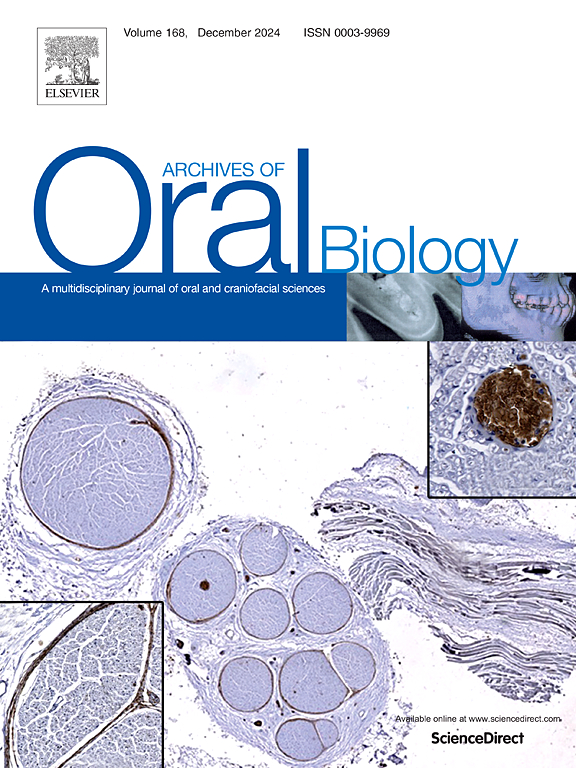Molecular and thermal signatures of dental tissues in third molars: An in vitro comparative study using fourier-transform infrared spectroscopy and differential scanning calorimetry
IF 2.1
4区 医学
Q2 DENTISTRY, ORAL SURGERY & MEDICINE
引用次数: 0
Abstract
Objective
To characterize and compare the molecular and thermal characteristics of enamel, dentin, cementum, and the dentin–pulp complex in permanent third molars using Fourier-transform infrared (FTIR) spectroscopy and differential scanning calorimetry (DSC).
Design
Samples from extracted third molars (n = 15) were prepared and analyzed using FTIR to assess molecular composition and DSC to evaluate thermal transitions, including dehydration, collagen degradation, and mineral phase transformation. All measurements were conducted in triplicate.
Results
FTIR revealed enamel as highly mineralized with minimal organic content, dentin and cementum as collagen-rich, and the dentin–pulp complex as a hybrid tissue. DSC analysis identified consistent thermal transitions: water loss (110–125 °C), collagen breakdown (300–320 °C), and mineral decomposition (455–470 °C). Enamel displayed the highest crystallinity, while cementum exhibited the highest enthalpy change. Tissues with stronger FTIR collagen peaks corresponded to higher DSC energy release during protein degradation.
Conclusion
Molecular and thermal profiling of dental tissues provide baseline reference data for biomaterial design and regenerative strategies.
Clinical significance
Understanding tissue-specific molecular and thermal properties can guide the development of biomimetic restorative materials, inform safer thermal thresholds during clinical procedures, and support diagnostic approaches for aging and pathological changes.
第三磨牙牙组织的分子和热特征:傅里叶变换红外光谱和差示扫描量热法的体外比较研究。
目的:采用傅里叶变换红外光谱(FTIR)和差示扫描量热法(DSC)对恒磨牙釉质、牙本质、牙骨质和牙本质-牙髓复合体的分子和热特性进行表征和比较。设计:制备提取的第三磨牙样品(n = 15),并使用FTIR评估分子组成,DSC评估热转变,包括脱水、胶原降解和矿物相变。所有测量一式三份。结果:FTIR显示牙釉质高度矿化,有机物含量极低,牙本质和牙骨质富含胶原蛋白,牙本质-牙髓复合体为杂交组织。DSC分析确定了一致的热转变:水分损失(110-125 °C),胶原蛋白分解(300-320 °C)和矿物质分解(455-470 °C)。釉质的结晶度最高,牙骨质的焓变最高。FTIR胶原蛋白峰较强的组织在蛋白质降解过程中相应的DSC能量释放较高。结论:牙组织的分子和热谱分析为生物材料设计和再生策略提供了基线参考数据。临床意义:了解组织特异性分子和热特性可以指导仿生修复材料的开发,在临床过程中提供更安全的热阈值,并支持衰老和病理变化的诊断方法。
本文章由计算机程序翻译,如有差异,请以英文原文为准。
求助全文
约1分钟内获得全文
求助全文
来源期刊

Archives of oral biology
医学-牙科与口腔外科
CiteScore
5.10
自引率
3.30%
发文量
177
审稿时长
26 days
期刊介绍:
Archives of Oral Biology is an international journal which aims to publish papers of the highest scientific quality in the oral and craniofacial sciences. The journal is particularly interested in research which advances knowledge in the mechanisms of craniofacial development and disease, including:
Cell and molecular biology
Molecular genetics
Immunology
Pathogenesis
Cellular microbiology
Embryology
Syndromology
Forensic dentistry
 求助内容:
求助内容: 应助结果提醒方式:
应助结果提醒方式:


